SENSECASE: Crafting Deformable Interfaces to Physically Augment Smartphones
Summary
Though we live in the era of the touchscreen (tablet PCs and smart phones providing a rigid and flat interface) people and the industry are getting excited about the world of tangible 3D interfaces. This may be explained for two reasons: first, the emergence of cheap vision-based gestural interfaces conquering the space above and below the screen (but without haptic feedback), and second - and perhaps more important for the present discussion - the explosion of the 3D printing industry and the possibility for the end user to not only customize the layout of icons on a screen, but also of designing their own physical interface from scratch. Mass-produced smartphones could then be seen as bare-bone electronics devices whose shape can be physically augmented, personalized and crafted.
Two interesting issues to consider when crafting the interface are potential for emotional attachment and intuitive interaction. We consider both are complementary: complex interactions involving emotions are highly idiosyncratic, and are therefore a good candidate for personalization. Attachment reinforces the connection between the device and its user - attachment may come from the shape of the interface (e.g. a teddy bear) as well as the highly personal way of interacting with it.
In order to introduce DIY techniques in the world of deformable input-output interfaces, it is necessary to provide a generic manufacturing/sensing method for such arbitrarily designed shapes. The goal of this project is to investigate minimally invasive methods (no wirings) to physically augment tablet PCs or smartphones. Our proposed UI is called as SENSECASE. In SENSECASE, a deformable object is put over the front or rear camera - this 'object' can be part of the smartphone case itself. The object is filled with transparent and black gels. The complex light reflections inside the object can be used to recognize patterns of deformation or grasping and map them to different UI actions. A machine learning algorithm allows object shape and deformation to be designed arbitrarily, bringing the device physical personalization at a level never reached before, with minimal interference with its original hardware.
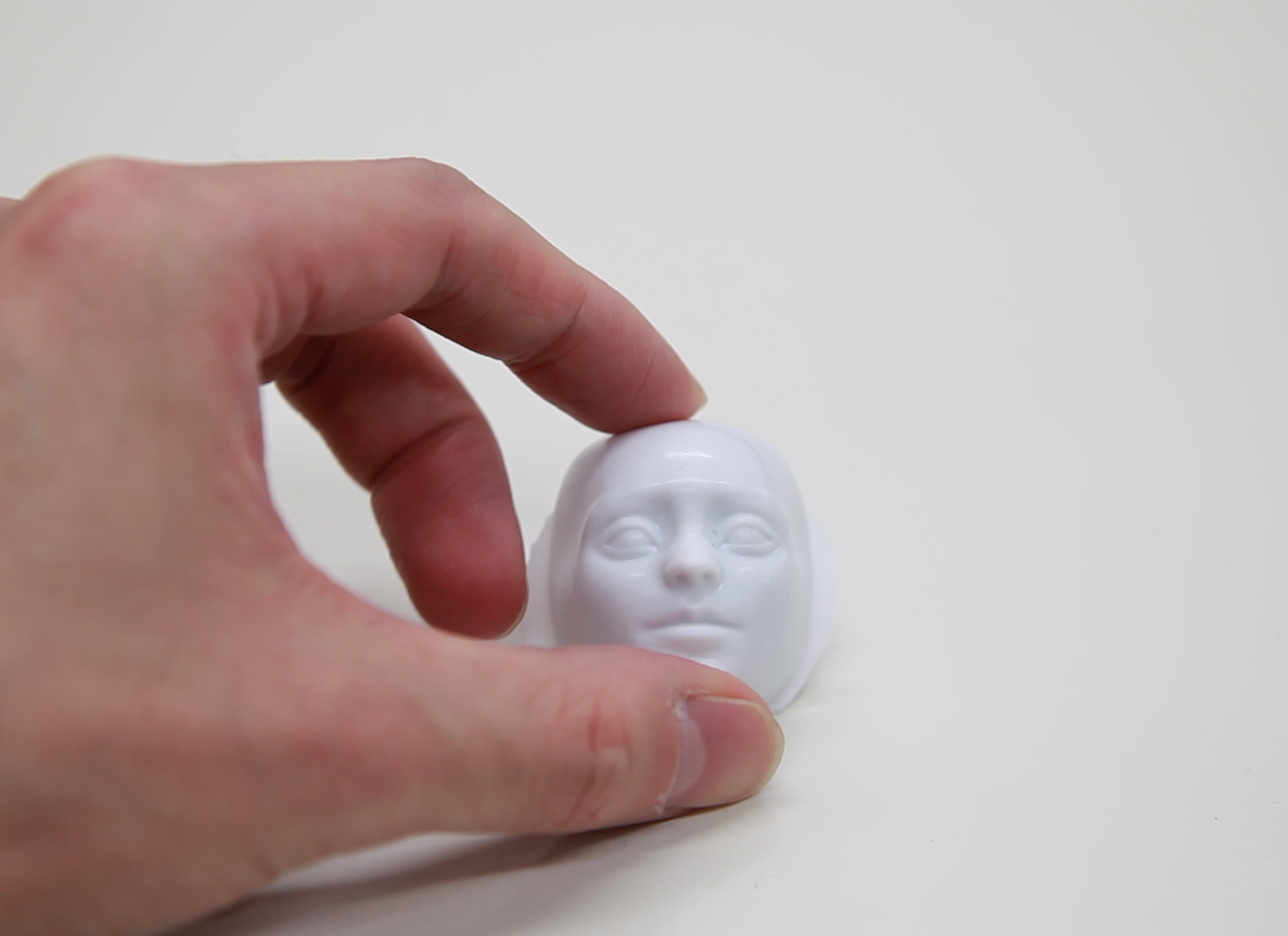
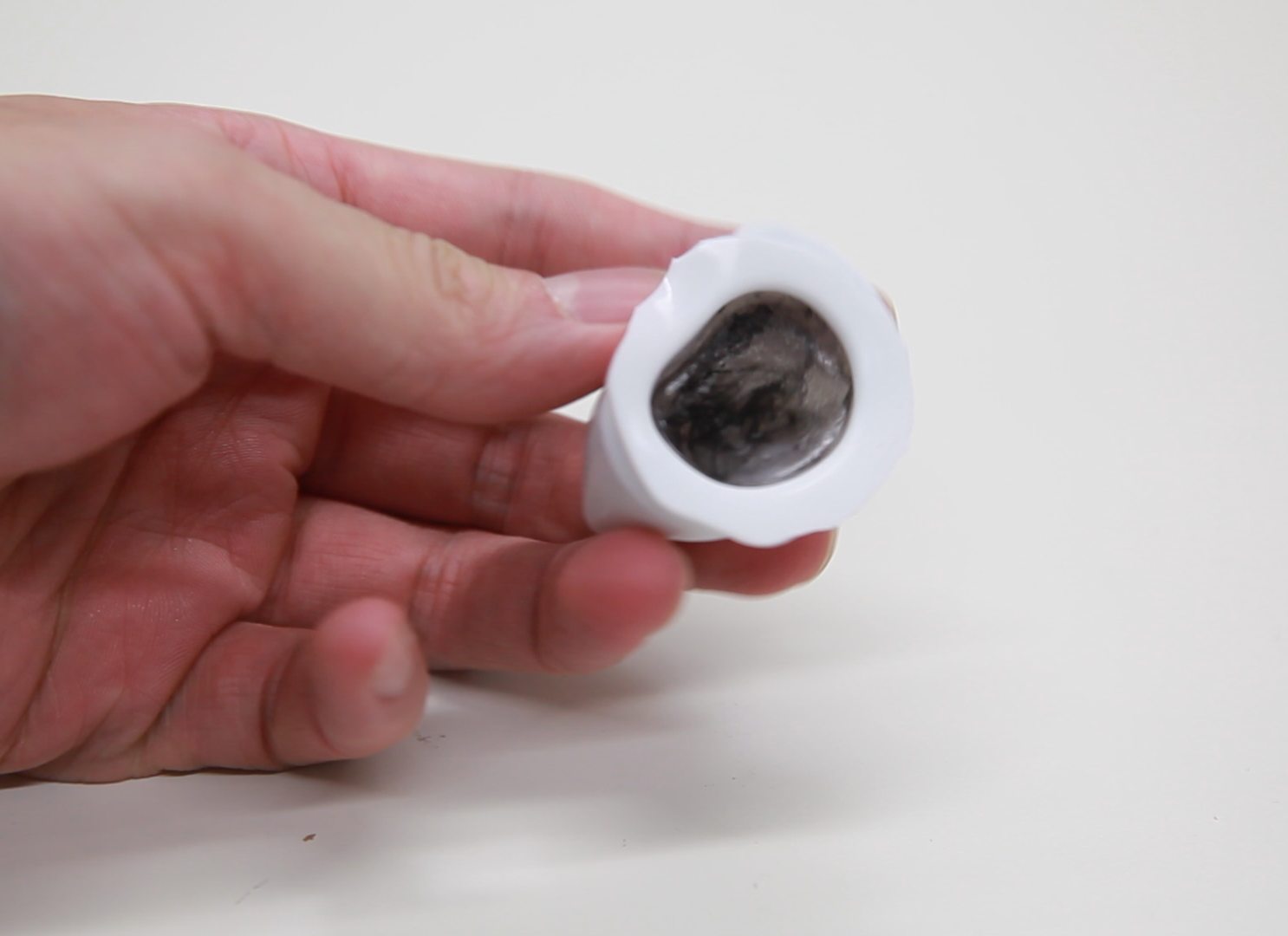
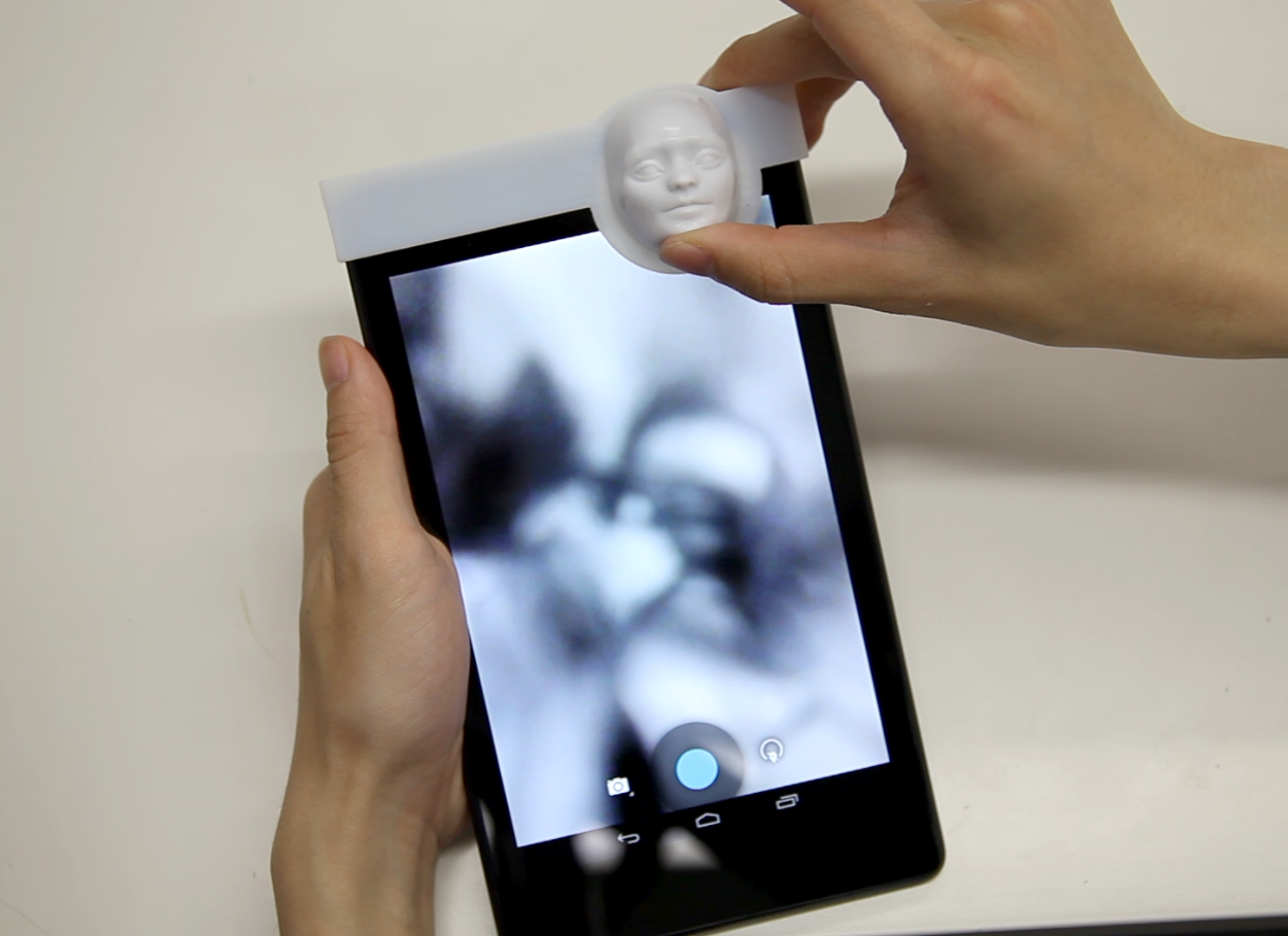
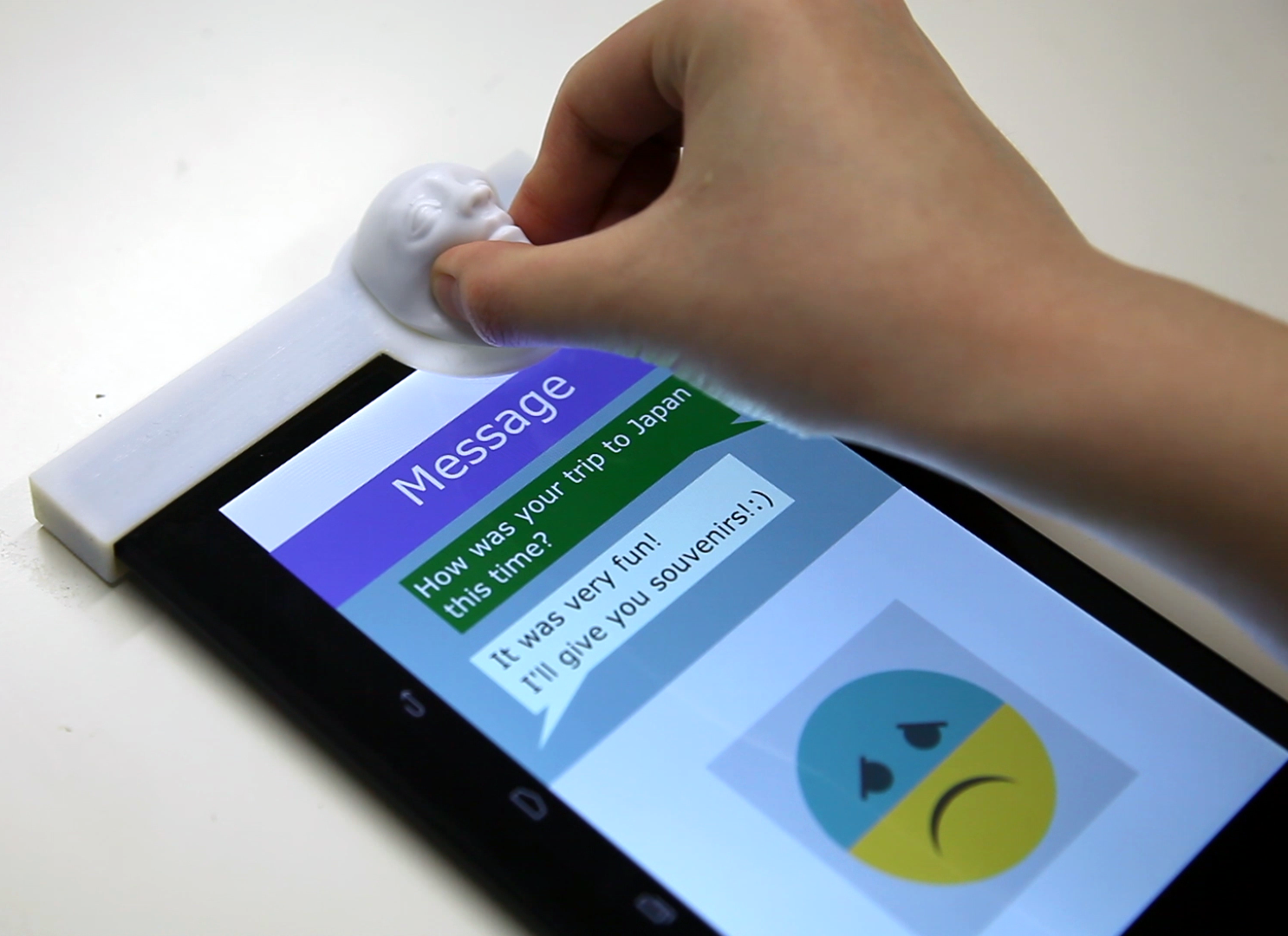
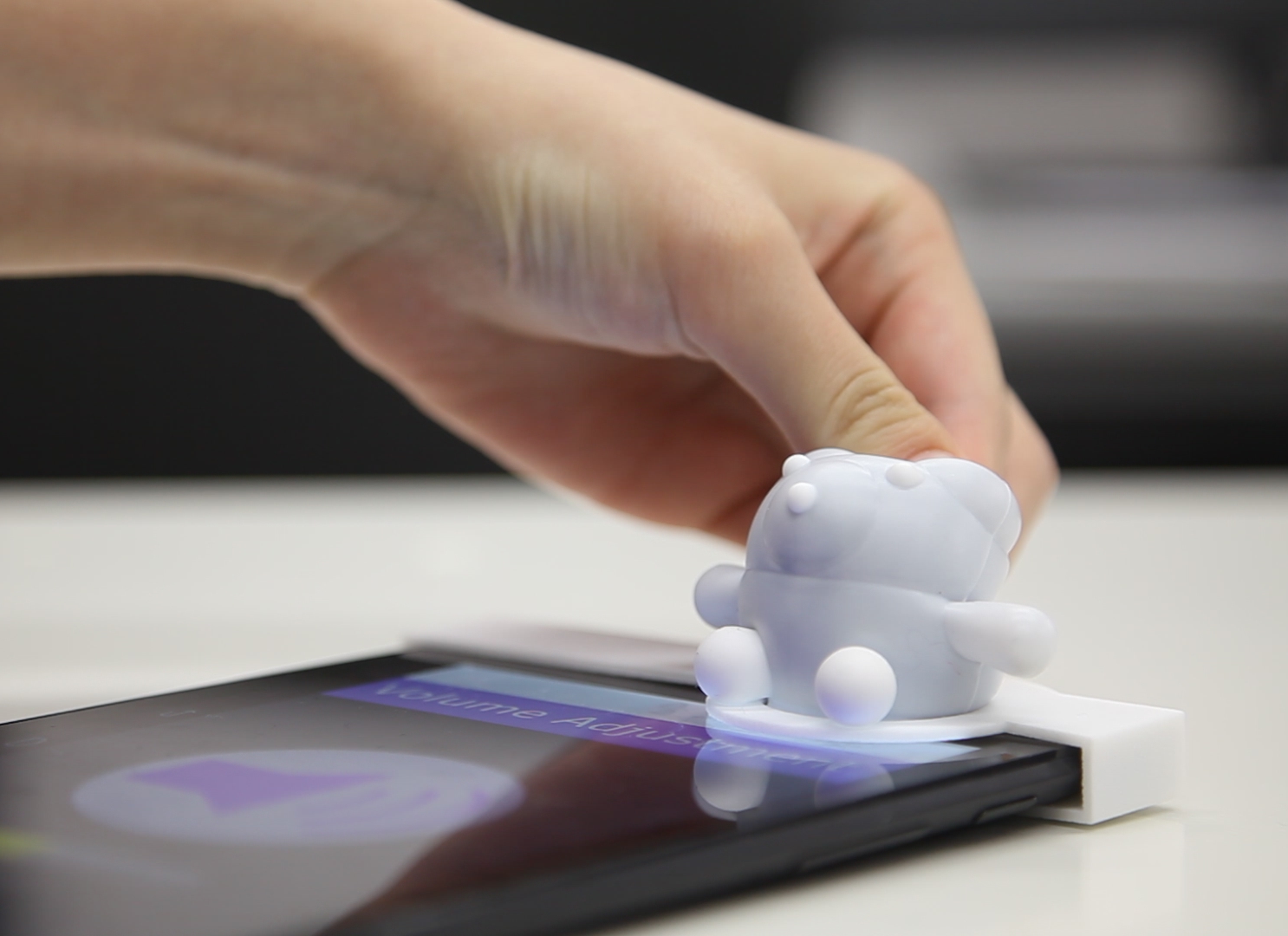

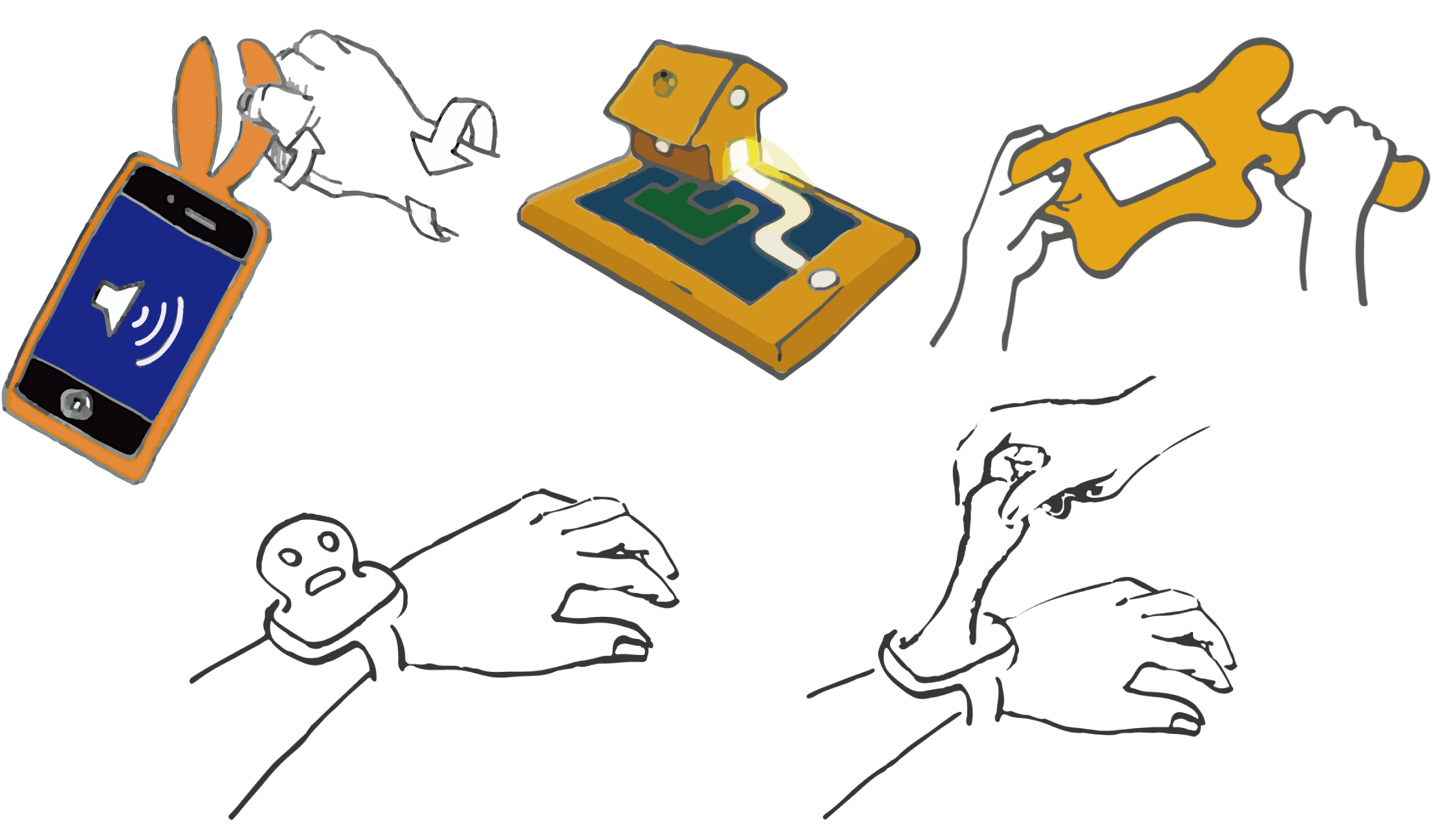
Movie
If you want to use the original video, please send an e-mail for copyright permission to contact .
References
- Watanabe Ch., Cassinelli A., Watanabe Y., Masatoshi I.: Generic Method for Crafting Deformable Interfaces to Physically Augment Smartphones, CHI'14 Extended Abstracts: ACM SIGCHI Conference on Human Factors in Computing Systems, CHI'2014,Apr 26 - May 01 2014, Toronto, ON, Canada (2014) [PDF-3MB], [MOV-16MB]



